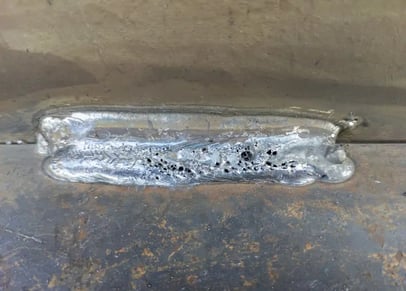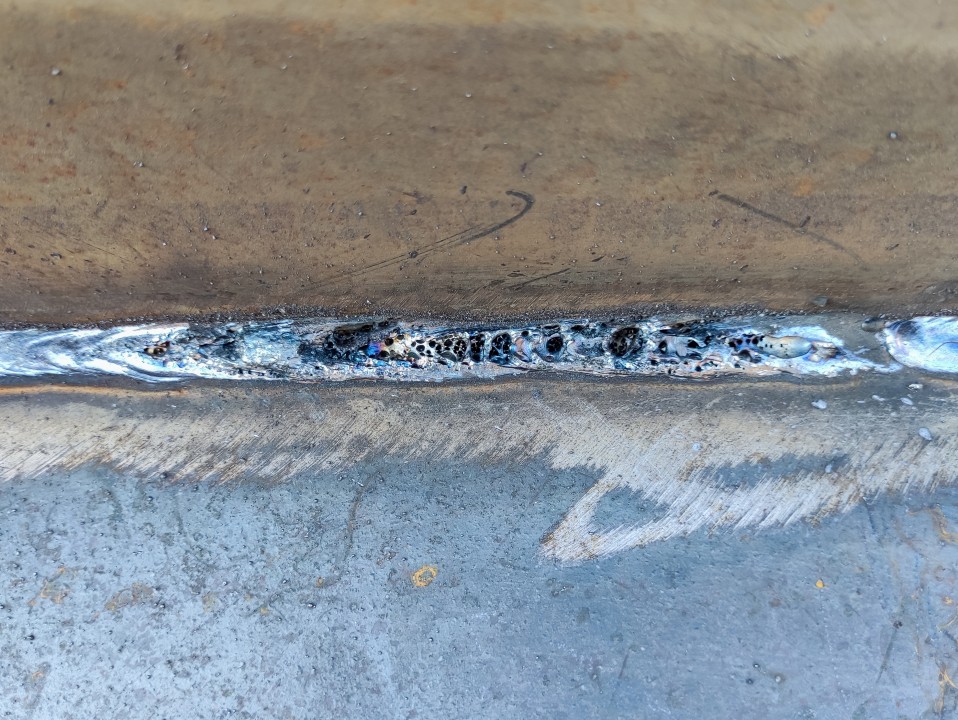Understanding What is Porosity in Welding: Causes and Solutions
Understanding What is Porosity in Welding: Causes and Solutions
Blog Article
Deciphering the Secret of Porosity in Welding: Tips for Decreasing Problems and Taking Full Advantage Of Quality
In the detailed globe of welding, porosity remains a relentless obstacle that can significantly influence the high quality and integrity of bonded joints. Recognizing the factors that add to porosity development is essential in the pursuit of perfect welds. By unraveling the secret of porosity and implementing effective approaches for issue minimization, welders can raise the criteria of their job to attain superior high quality outcomes. As we explore the depths of porosity in welding, revealing the tricks to its avoidance and control will be vital for specialists looking for to understand the art of high-quality weldments.
Understanding Porosity in Welding
Porosity in welding, a typical issue come across by welders, describes the presence of gas pockets or voids in the bonded product, which can endanger the honesty and high quality of the weld. These gas pockets are generally entraped during the welding process because of numerous variables such as inappropriate shielding gas, infected base materials, or inaccurate welding parameters. The formation of porosity can deteriorate the weld, making it at risk to fracturing and rust, inevitably leading to architectural failures.
By recognizing the relevance of preserving proper gas securing, making sure the cleanliness of base materials, and enhancing welding settings, welders can substantially minimize the likelihood of porosity formation. In general, a thorough understanding of porosity in welding is important for welders to generate top notch and durable welds.

Common Sources Of Porosity
When examining welding procedures for possible top quality concerns, understanding the typical sources of porosity is crucial for keeping weld stability and avoiding architectural failures. Porosity, characterized by the existence of tooth cavities or gaps in the weld metal, can substantially jeopardize the mechanical residential properties of a welded joint. One usual root cause of porosity is improper securing gas protection. Inadequate shielding gas flow prices or incorrect gas combinations can cause atmospheric contamination, causing porosity formation.
Additionally, welding at improper criteria, such as exceedingly high travel speeds or currents, can create extreme turbulence in the weld pool, trapping gases and triggering porosity. By resolving these typical reasons via correct gas securing, material prep work, and adherence to ideal welding criteria, welders can decrease porosity and see this here boost the anchor quality of their welds.
Techniques for Porosity Prevention
Implementing effective precautionary steps is important in minimizing the incident of porosity in welding processes. One method for porosity avoidance is making certain correct cleaning of the base steel prior to welding. Impurities such as oil, grease, corrosion, and paint can result in porosity, so thorough cleaning making use of ideal solvents or mechanical techniques is important.

Another key precautionary action is the option of the ideal welding consumables. Making use of top notch filler materials and shielding gases that are suitable for the base steel and welding process can significantly decrease the threat of porosity. Furthermore, keeping proper welding specifications, such as voltage, present, travel rate, and gas circulation rate, is important for porosity avoidance. Differing the advised settings can result in improper gas coverage and inadequate combination, resulting in porosity.
Furthermore, using correct welding strategies, such as keeping a constant travel rate, electrode angle, and arc length, can aid stop porosity (What is Porosity). Ample training of welders to ensure they comply with best techniques and high quality visit this page control treatments is additionally important in reducing porosity problems in welding

Finest Practices for High Quality Welds
One secret technique is maintaining appropriate cleanliness in the welding area. Completely cleaning up the workpiece and bordering location before welding can help mitigate these issues.
Another ideal method is to meticulously choose the proper welding parameters for the specific materials being signed up with. Appropriate parameter selection guarantees optimum weld penetration, combination, and total high quality. Using top quality welding consumables, such as electrodes and filler metals, can dramatically impact the final weld top quality.
Significance of Porosity Control
Porosity control plays a vital function in guaranteeing the integrity and quality of welding joints. Porosity, defined by the presence of cavities or spaces within the weld steel, can significantly jeopardize the mechanical residential or commercial properties and architectural stability of the weld. Too much porosity deteriorates the weld, making it extra prone to breaking, rust, and overall failing under operational tons.
Efficient porosity control is necessary for preserving the wanted mechanical buildings, such as toughness, ductility, and toughness, of the welded joint. What is Porosity. By reducing porosity, welders can improve the overall high quality and integrity of the weld, ensuring that it fulfills the efficiency demands of the desired application
Moreover, porosity control is essential for achieving the wanted aesthetic look of the weld. Excessive porosity not only compromises the weld but also diminishes its visual charm, which can be important in markets where aesthetic appeals are vital. Appropriate porosity control strategies, such as making use of the right protecting gas, managing the welding parameters, and guaranteeing appropriate cleanliness of the base products, are necessary for generating high-grade welds with marginal issues.

Verdict
In conclusion, porosity in welding is a common issue that can jeopardize the high quality of the weld. It is important to regulate porosity in welding to make sure the honesty and stamina of the last item.
Report this page